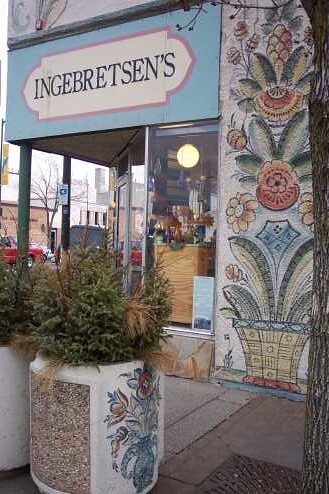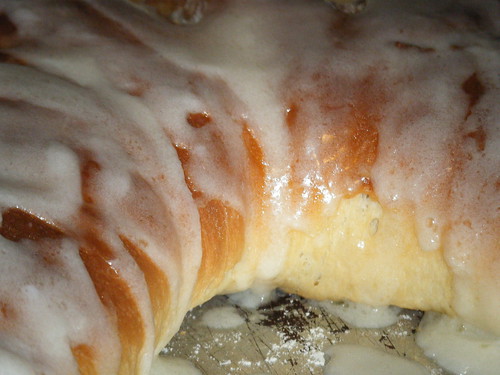
My mother and her mother made julekage, which is similar to this, except it was full of raisins and currants. I like raisin bread, and it would be easy enough to mix a pound into this recipe, but hubby won't eat them so I omit.
This isn't my family recipe, although it tastes the same (sans fruit). It is from our church cookbook, submitted by Margaret Wicktor.
Swedish Tea Ring
2 eggs, well beaten
1 cup milk
1/2 cup sugar
1/4 cup butter (I use only the real stuff)
1 tsp. salt
2 pkgs. yeast (or 4-1/5 teaspoons)
5 cups flour
1/4 cup lukewarm water
For the inside:
1/4 cup melted butter
1 to 1-1/2 cups brown sugar (or more, this recipe didn't specify, so that is about the amount I used)
cinnamon for sprinkling
Mix yeast in 1/4 c. lukewarm water. Scald milk (heat just until it starts to boil, then remove from heat - it will be about 180 - 185 degrees F, or 82 deg. C) and pour into a large bowl. Add sugar, butter and salt. Add half the flour, yeast and eggs. Beat well.
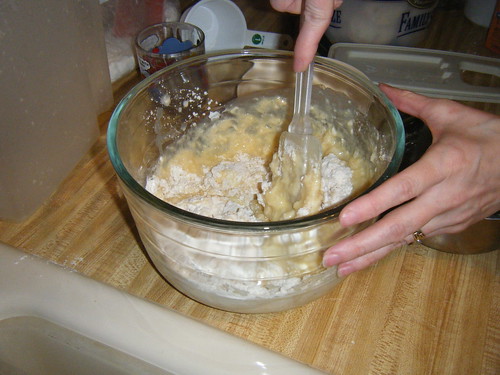

Add remaining flour, and make a soft dough.
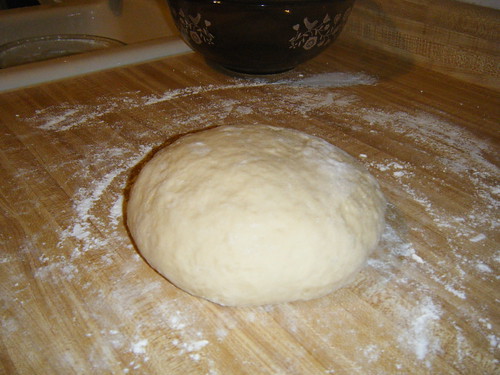
Knead on floured board (or your countertop) until light (I took this to mean "not as sticky" - I kneaded the bread about 10-15 times). Place the dough in an ungreased bowl (no need to cover) and let it rise until doubled in size (about 30-45 minutes).
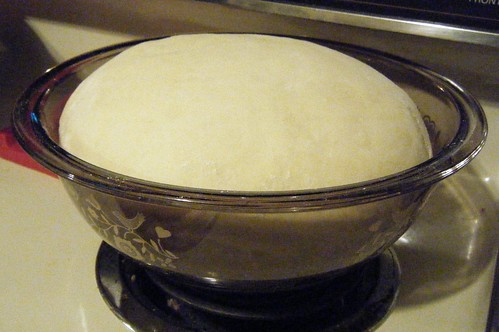
Punch down and divide into 2 parts.
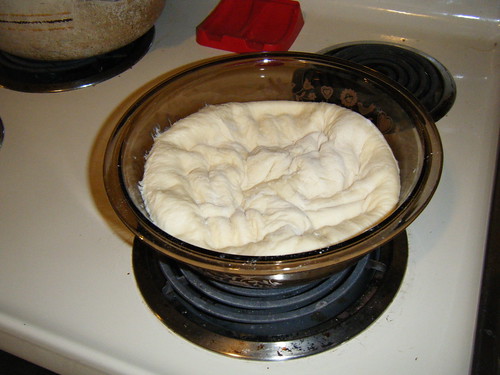
Roll out to 1/2-inch thick (mine measured about 7"x10").

Spread with melted butter, cinnamon and brown sugar, then roll up as if you were making cinnamon rolls.
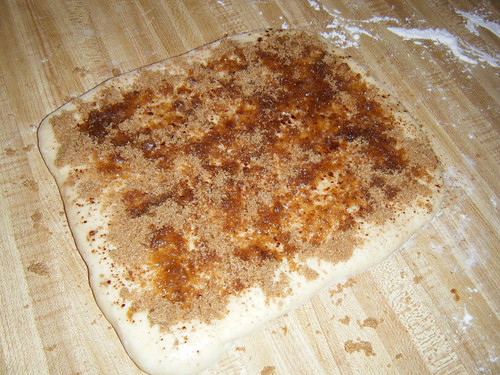
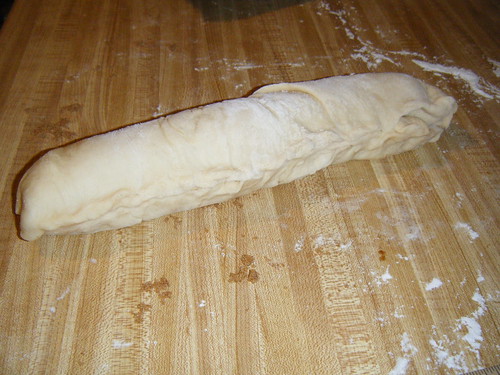
Place on an ungreased baking sheet (or two), and cut top with scissors (see picture).
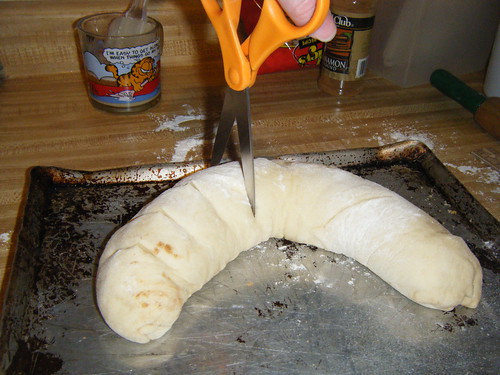
Put in a warm place to rise until doubled (there is no need to cover the bread. For a warm place to rise, I always put a pan of hot water on the bottom rack of my oven and set the temp to 200 degrees for a few minutes, then open the door so it's not too hot).
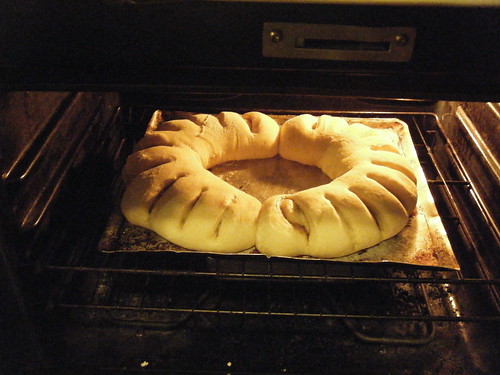
Bake at 375 degrees for 30 minutes (I baked mine for 20 minutes, then shut off the heat for the last 10, so it wouldn't get too dark).
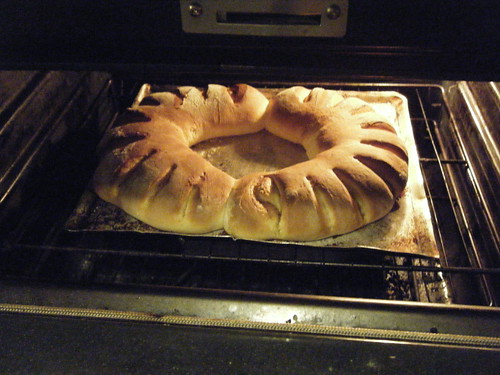

While still warm, frost with icing .
I didn't have an actual recipe, per se - but this is how Mom used to do it: dump some powdered sugar (about 3/4 c. - 1 c.) into a bowl, mix in about 2 Tablespoons softened butter and 2 Tablespoons milk. Mix well.
Sprinkle with chopped nuts. Makes two 12" rolls, which should serve 24-30 people, depending on how thick you slice it.

My hubby's a bit on the picky side, so I didn't ice the whole thing. It would have looked much better with the sliced almonds or chopped walnuts on top, but it was late so I forgot to do that part!
It still tasted good, though. Especially on a chilly 7 degrees below zero morning, with a cup of hot coffee.
Enjoy!




